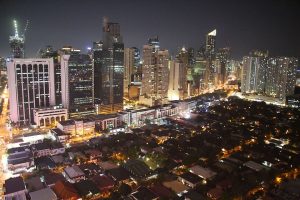
PHL growth likely second strongest among 6 major ASEAN economies
THE PHILIPPINES is expected to be the second fastest-growing economy of the six major Southeast Asian Nations countries in the next ten years due to robust infrastructure and its increasing workforce, Bain and Co., Monk’s Hill Ventures’ Angsana Council, and DBS Bank said.
In a report, they said Philippine gross domestic product (GDP) growth will likely average 6.1% yearly until 2034, upgrading the three firms’ earlier projection of 4-5% growth over the next 10 years.
“Since 2022, our projections have improved for the Philippines and Malaysia, thanks to significant efforts by the current administrations to become more ‘pro-investment’ and ‘pro-business,’” they said.
If the forecasts are borne out, the Philippines will trail only Vietnam (6.6%) while beating out Indonesia (5.7%), Malaysia (4.5%), Thailand (2.8%), and Singapore (2.5%). The Philippines would also outpace the six-country average of 5.1%.
“Indonesia and the Philippines, which start from a lower base, are moving in a positive direction, especially in economic innovation,” it said.
Main drivers of the Philippine economy include a “pro-growth administration” and priority investments in infrastructure, especially renewables, which are gaining interest among foreign investors.
“The Philippines and Vietnam have substantial offshore wind potential, and the region has vast untapped solar and hydropower availability. With improved grid infrastructure, government support, and financial incentives, Southeast Asia could deliver climate, economic, and energy security benefits regionally and abroad,” according to the report.
The Philippines, having one of the youngest workforces in the region, will also have demographics on its side, the report said.
“The Philippines leads with the strongest working population increase, whereas Singapore and Thailand are experiencing declines caused by low birth rates and ageing populations.”
Emigration from the Philippines and Indonesia has also slowed due to better job markets, it also said.
On the other hand, education, infrastructure, government effectiveness, and geopolitical tensions with China pose risks to Philippine growth.
“SEA-6 has shown generally positive trends for education spending with Indonesia, Vietnam, and the Philippines witnessing a sizeable increase in per capita spending on education; however, they still lag significantly behind their regional counterparts,” they said. — Beatriz Marie D. Cruz



